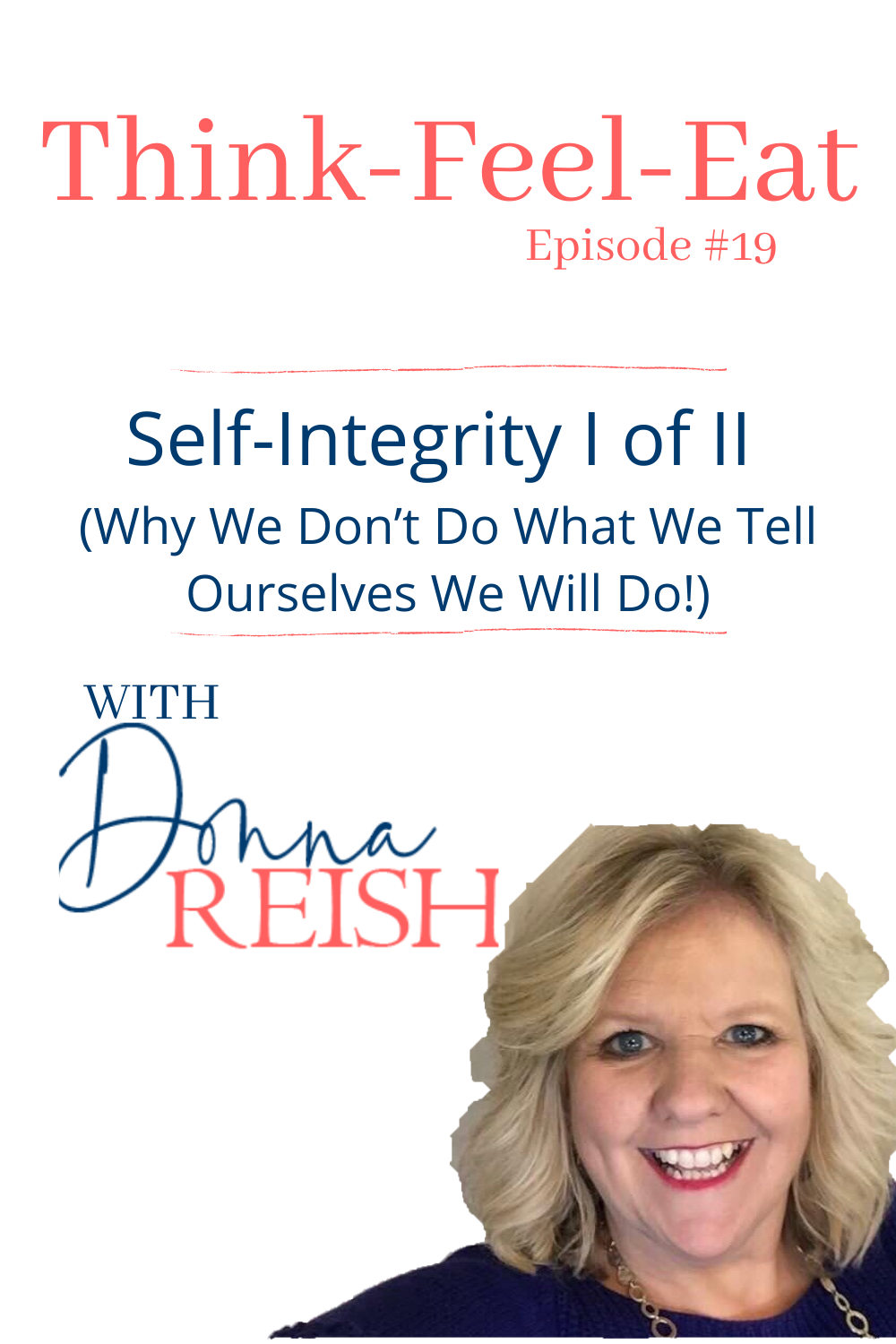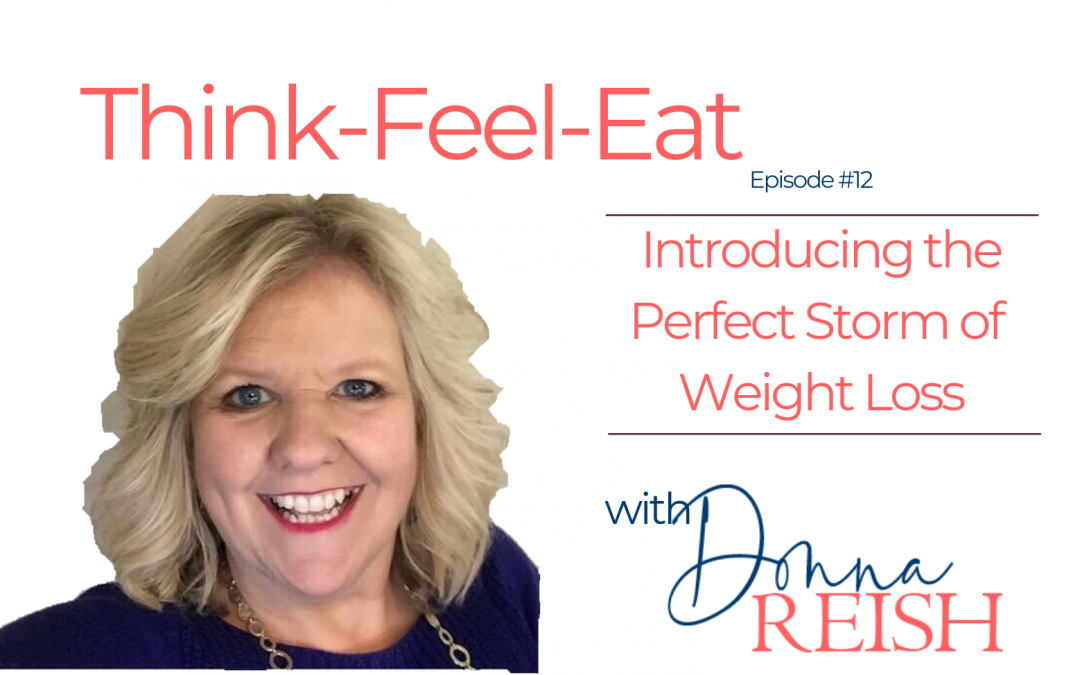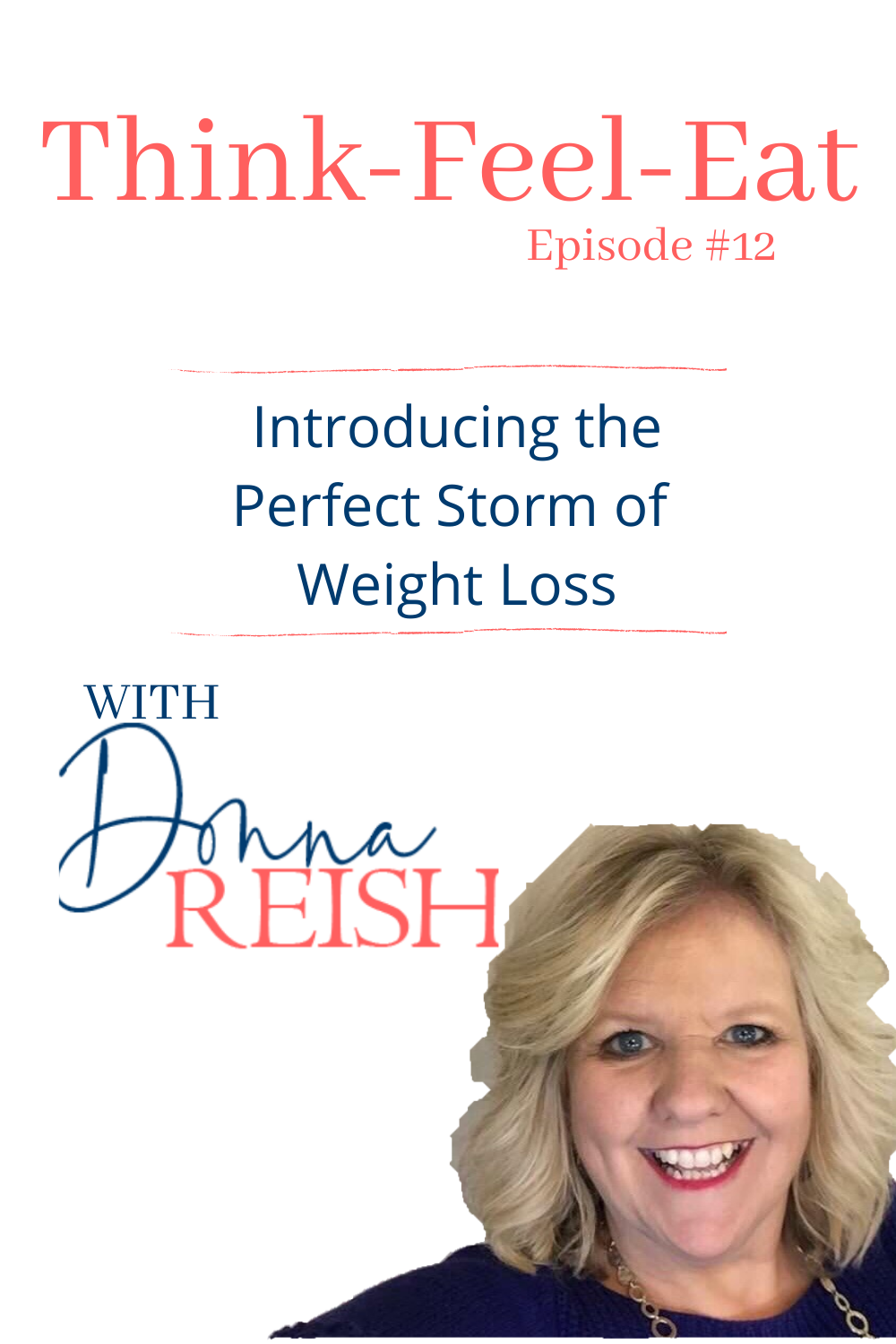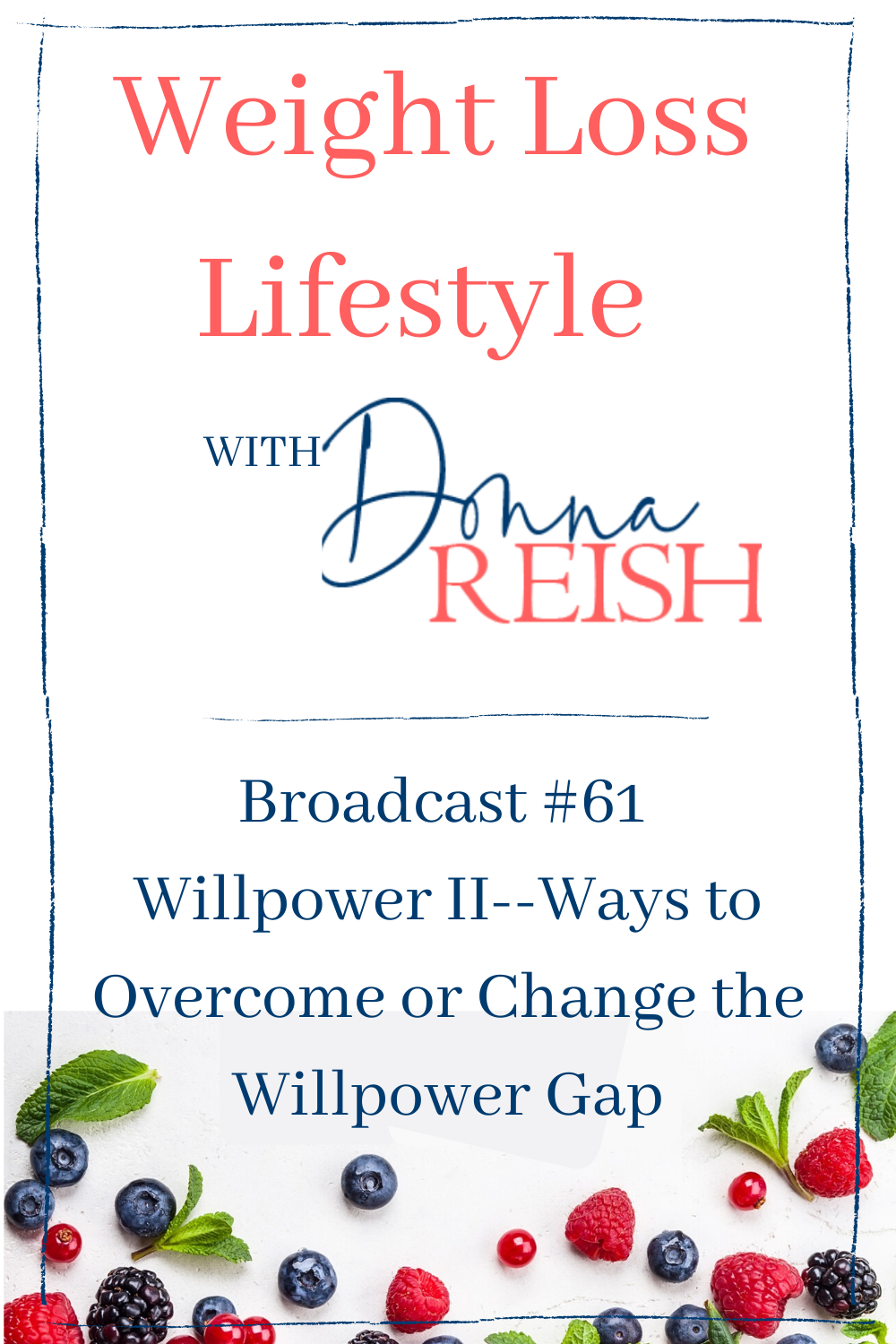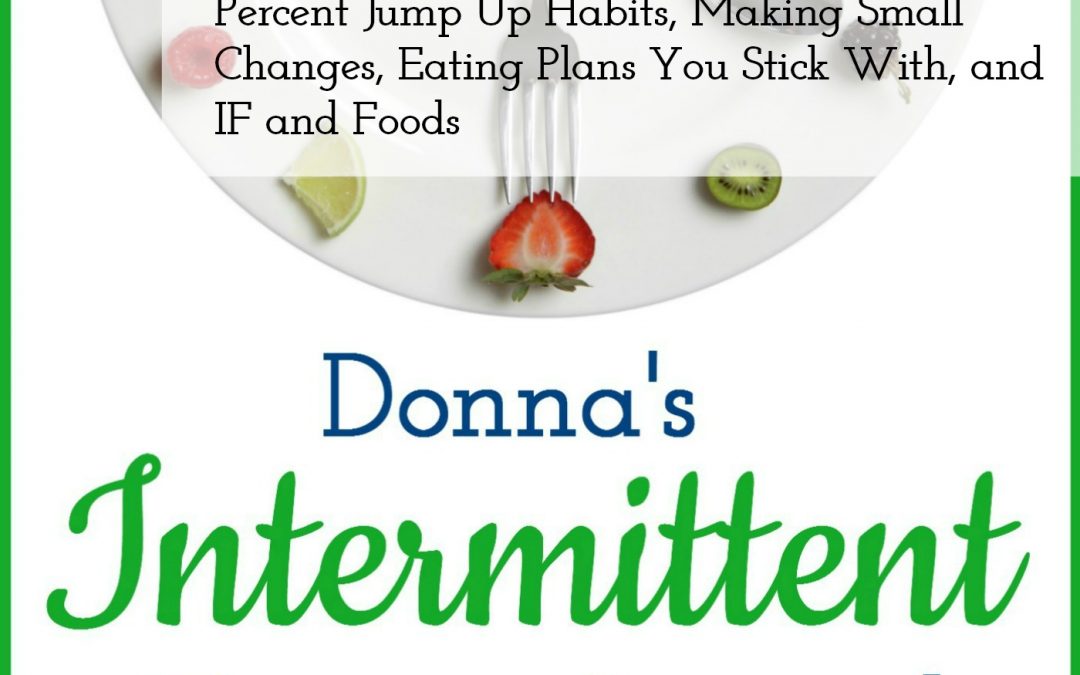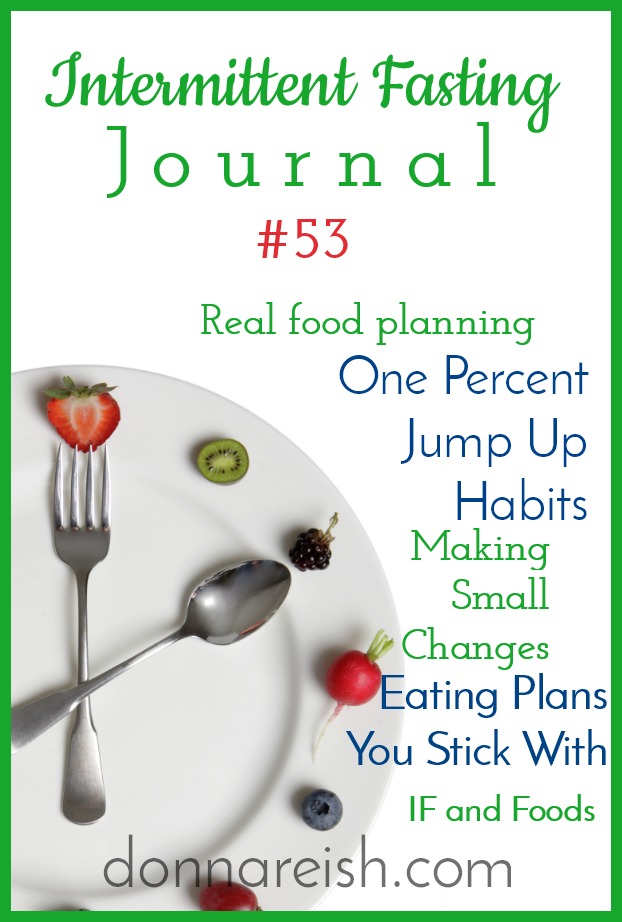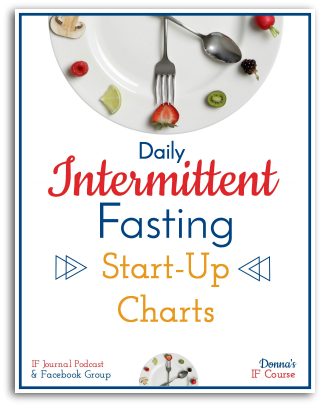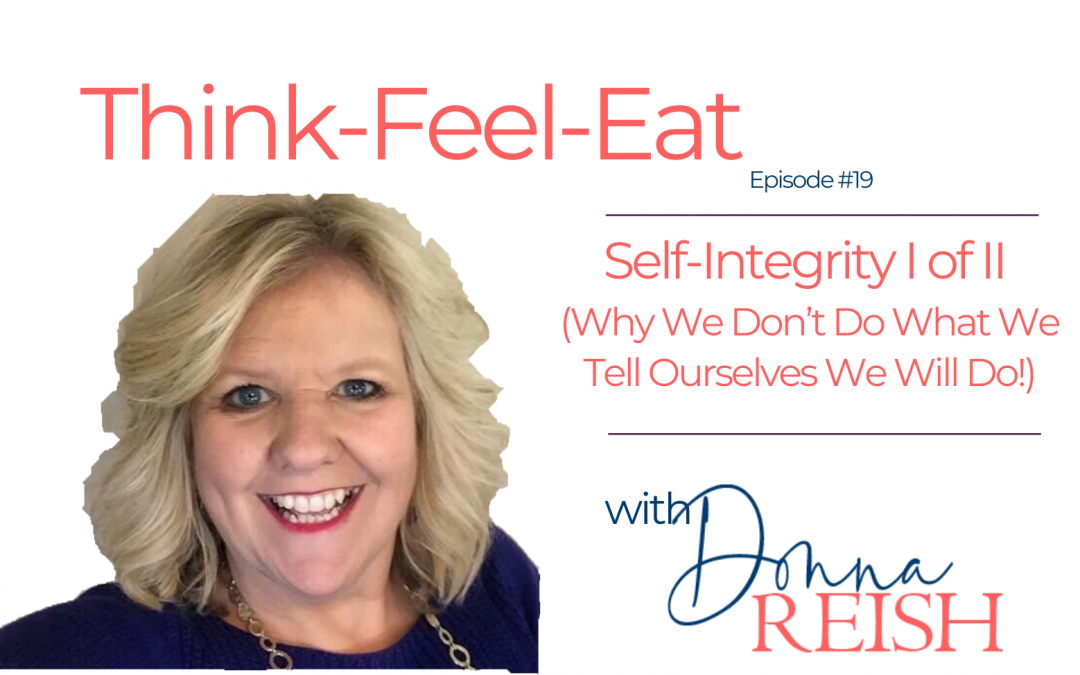
Think-Feel-Eat Episode #19: Self-Integrity I of II (Why We Don’t Do What We Tell Ourselves We Will Do!)
Hi! I’m Donna Reish, IF teacher, weight loss coach, blogger, and half of “The Minus 220 Pound Pair” as my husband and I have lost over 220 pounds together (160 of that in the past couple of years through the Weight Loss Lifestyle habits and strategies I teach!).
The next two episodes’ contents have been life changing for me! And I am happy to present them to you to help you change your life as well.
Not doing what we tell ourselves we will do is probably the greatest thief of our dreams and future life. And yet we do that over and over—and then scratch our heads in bewilderment as to why we don’t do what we tell ourselves we will do.
Come to find out, it isn’t our fault.
In Episode 19 of Think-Feel-Eat, I present several enemies of self-integrity. The bare bones of why we don’t do what we tell ourselves we will do.
(See Weight Loss Lifestyle #60 and #61 for my two Willpower Episodes….super empowering to know why we don’t have the willpower we think we should!)
These range from trusting willpower to get us through to being too vague to waiting until we are in the moment (and using our toddler brains to guide us!).
The good news is that all of these are over-come-able!
We can have self-integrity. And when we do, it will change our lives!
Self-integrity will change our size, weight, health, muscles, food, time management, relationships, home care, self care, work, and more!
As always, I have a full, detailed outline, an audio, and a video version. Start gaining self-integrity today!
Find all of my episodes, outlines, and articles for my two weekly broadcasts:
(1) Weight Loss Lifestyle broadcast (formerly Donna’s Intermittent Fasting Broadcast)
Sign up for my free webinar: intermittentfastingwebinar.com
TFE 19 Outline Self Integrity Part I of II (Why We Don’t Keep Our Word to Ourselves)
A. Defining and Understanding Self-Integrity
1. Definition: the quality of being truthful and honest with yourself, of intentionally aligning personal behaviors and actions to be congruently aligned with your own values and goals. It requires a commitment to align ourselves to stay consistent with personal values so that we do what we tell ourselves we will do.
2. Difficult because we are not answering to anyone but ourselves
3. Event people who are amazing in integrity with others often are not with themselves.
4. Self Integrity covers every area of our lives!!
a. Weight
b. Drugs/alcohol/nicotine
c. Pornography
d. Business/scheduling work
e. Family
f. Marriage
g. Shopping
B. Enemies of Self-Integrity
1. Thoughts about our past failures/Negative Self Talk
a. Thoughts about our past failures
i. When we bring in our past inconsistencies and lack of self-integrity, we can’t move into self integrity even with tools.
ii. Thoughts and words spoken like “I never do what I say I will do” or “I’ll probably just skip things this time too” or “I can never stay on an eating protocol, so I will probably do that again” will keep us from moving forward even if we do have the tools and the understanding of the processWords/thoughts about the hiddenness of self-integrity
b. Words/thoughts about the hiddenness of self-integrity
i. Nobody will know
ii. Must get to where we want to do it for us—that even if we were the only ones who know, we still want to do it
iii. In the meantime, we have to believe that when we don’t do what we say, it does matter (health, weight, income, time, etc)—that this thing I said I would do but now don’t want to do will truly affect me.
iv. Better Thought: My past self made this great plan for my current self!
2. Perfectionism
a. “Believing your life would be better if you were perfect and thus, should strive for that”
b. The way we deal with unmet perfectionism is to give up entirely—if we can’t do it perfectly, we just won’t do it.
c. It is common sense that five minutes of exercise is better than nothing or that staying on a protocol 75% of the time is better than not at all, but when we are stuck in perfectionism, we can’t think that through
d. Creates a vicious cycle: tomorrow I will do it perfectly; then we don’t; we beat ourselves up/belittle ourselves; we get relief by planning to d it perfectly the next time; rinse and repeat.
e. Perfectionism will be the biggest roadblock to our using the ABC tool by Fogg/Harris
f. A change a month yielded 360 changes for us over a 30+ year period of time!!!
3. Not breaking goals down/biting off too much
a. Often related to perfectionism
b. Sometimes we can’t see the little steps it takes to get to a big goal
c. Other times the little steps do not feel like they will get us there
d. We believe we should “play big or go home”
e. My bladder exercises—break it down because didn’t see how I could add another thing to my day.
4. Relying on willpower
a. When we don’t plan ahead and make decisions ahead of time, we leave the weight of any changes in our lives (or any self integrity issues) on the part of the brain that is ill-equipped to make those decisions and carry out the goals in our life
b. The amount, type, and intensity of willpower that is needed to do some things for some people are nearly impossible to override/sustain
c. Research shows we spend four hours per day resisting temptations
d. We have a willpower gap—the number of instances we need willpower is greater than the amount of willpower we have in any given day
e. See Weight Loss Lifestyles Episodes 60 and 61 for extensive willpower teaching.
5. Not planning/deciding ahead of time
a. Prefrontal cortex vs. toddler brain
b. Decision making processes are those done ahead, not in the moment
c. In the moment relies on willpower, which we are often short of
C. Get More Help!
1. The Perfect Storm of Weight Loss teaches the steps to create your own protocol and bring together all aspects of weight loss
2. Willpower Part I and II
3. Sign up for a free consult call to see if weight/time management/life coaching with me would help you meet your goals!
